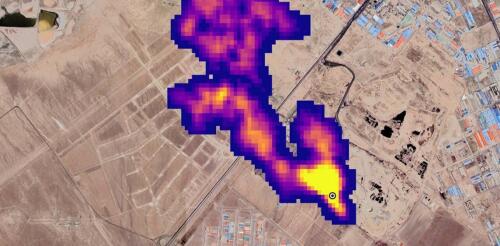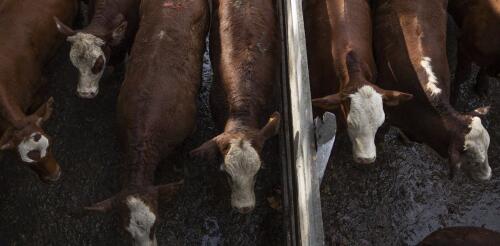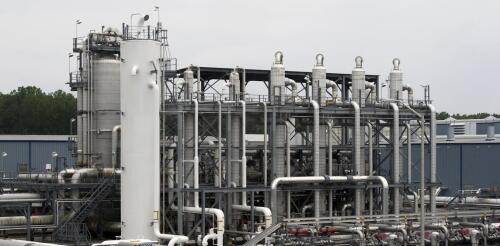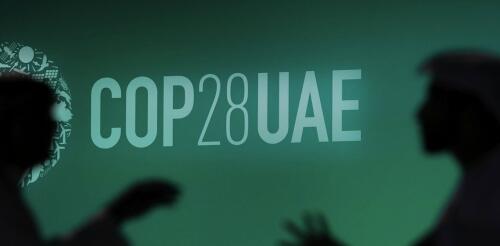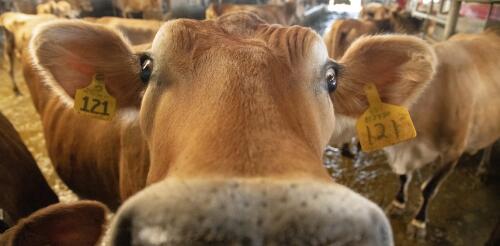Methane
Methane, a potent greenhouse gas, is being released from landfills and oil and gas operations around the world in far larger amounts than governments realized, recent airborne and satellite surveys show. That’s a problem for the climate as well as human health. It’s also why the U.S. government has been tightening regulations on methane leaks and wasteful venting, most recently from oil and gas wells on public lands. The good news is that many of those leaks can be fixed – if they’re spotted quickly. Riley Duren, a research scientist at the University of Arizona and former NASA engineer and scientist, leads Carbon Mapper, a nonprofit that is planning a constellation of methane-monitoring satellites. Its first satellite, a partnership with NASA’s Jet Propulsion Laboratory and the Earth-imaging company Planet Labs, launches in 2024. Duren explained how new satellites are changing companies’ and governments’ ability to find and stop methan...
In Argentina, where beef is a symbol of national pride, a government-led partnership has started certifying certain livestock as carbon neutral. It’s a big step that shouldn’t be underestimated, but getting the certification process right is crucial. The world’s livestock sector is a key driver of climate change, contributing around 12% of global greenhouse gas emissions. Two-thirds of agriculture’s annual greenhouse gas emissions come from livestock, with raising cattle for meat typically being the most emissions-intensive activity. While shifting diets to plant-based foods and alternative proteins can help reduce emissions, global meat consumption is growing with an expanding population and rising prosperity. There are ways that livestock producers can reduce those emissions. However, beyond social pressure, ranchers have few incentives to do so. Unless those steps to reduce emissions also increase productivity, they typically become costs with little...
The Biden administration has frozen pending decisions on permit applications to export liquefied natural gas, or LNG, to countries other than U.S. free trade partners. During this pause, which will last for up to 15 months, the administration has pledged to take a “hard look” at economic, environmental and national security issues associated with exporting LNG. Environmental advocates, who have expressed alarm over the rapid growth of U.S. LNG exports and their effects on Earth’s climate, praised this step. Critics, including energy companies and members of Congress, argue that it threatens European energy security and energy jobs in the U.S. Emily Grubert, associate professor of sustainable energy policy at the University of Notre Dame and a former official at the U.S. Department of Energy, explains why large-scale LNG exports raise complex questions for U.S. policymakers. Is the US a major LNG supplier? The U.S. is now the world’s largest LNG exporter...
The United Nations climate conference is underway in Dubai, and representatives from around the world will be confronting an extraordinary array of challenges over its two weeks. They carry with them some long-held – and new – grievances, and strong expectations. Framing the agenda is a “global stocktake” – an assessment of progress toward the 2015 Paris Agreement to keep global warming in check. Unsurprisingly, as record-breaking extreme heat has underscored so powerfully in 2023, the world is not on track. To cut emissions, progress is needed on national economic and fiscal policies, such as taxing pollution and ending subsidies for fossil fuels that are even higher today than before the pandemic, and on funds and commitments to speed a global energy and economic transformation. Funding for adaptation and disaster recovery is also high on the agenda. The United Nations’ 2023 Emissions Gap Report show...
For the first time ever, food and agriculture took center stage at the annual United Nations climate conference in 2023. More than 150 countries signed a declaration, committing to make their food systems – everything from production to consumption – a focal point in national strategies to address climate change. While the declaration is thin on concrete actions to adapt to climate change and reduce emissions, it draws attention to a crucial issue. The global food supply is increasingly facing disruptions from extreme heat and storms. It is also a major contributor to climate change, responsible for one-third of all greenhouse gas emissions from human activities. This tension is why agriculture innovation is increasingly being elevated in international climate discussions. Farmers work in a field during monsoon rains in Madhya Pradesh, India. Rajarshi Mitra via Flickr, CC BY-ND At presen...
